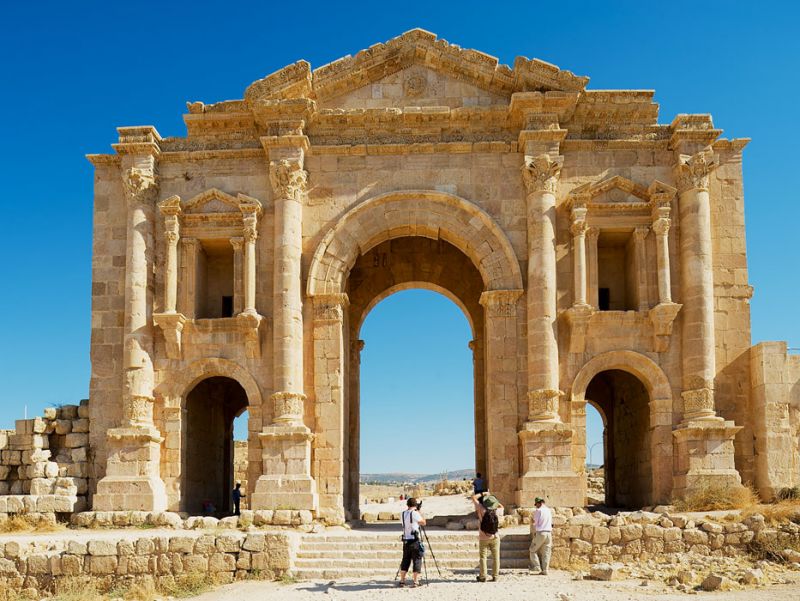Hadrian’s Arch of Jerash Jordan
Hadrian’s Arch of Jerash Jordan: This splendid triumphal arch was intended to become the main Southern gate to the city; however the expansion plans were never completed. Know More!
Jerash, a city replete with ancient wonders and Roman architecture, houses the magnificent Arch of Hadrian. This monumental gateway, one of the largest in the Roman Empire, stands as a testament to the city's rich past and imperial legacy.
Built to commemorate the visit of the Emperor Hadrian to Jerash in 129AD, this splendid triumphal arch was intended to become the main Southern gate to the city; however the expansion plans were never completed.
A Brief Historical Background
In the heart of the modern city of Jerash in Jordan, lies the ancient city of Gerasa, renowned for its well-preserved Roman ruins. Among these architectural marvels, the Arch of Hadrian is prominent. Erected in the 2nd century AD, the arch was a tribute to the Roman Emperor Hadrian's visit to Gerasa.

Architectural Splendor of the Arch
The grandeur of the arch lies in its colossal dimensions and intricate design details. Standing at a height of 21 meters, it features a rectangular structure with three arched gateways. Each of these gateways exhibits a dual façade, facing both north towards the city and south towards the road.
Dual Facades and Tripartite Design
The arch's dual facades, while similar, present subtle architectural differences. The central archway, larger and higher than the two flanking ones, is framed by four massive Corinthian columns. These columns stand on pedestals and bases, adorned with a decoration of acanthus leaves. The vertical arrangement of these elements creates a visually pleasing rhythm that enhances the overall aesthetics of the arch.
Use of Corinthian Capitals
Interestingly, the arch showcases the use of Corinthian capitals, characteristic of Roman architecture, but with a twist. Unlike traditional designs where capitals crown the top of columns, this monument features them at the bottom. This unconventional placement lends a unique charm to the structure.
Intricate Decorative Details
The craftsmanship of the arch is further accentuated by the intricate decorative details. The architrave of the main arch, as well as those of the two flanking arches, are supported by two flanking pilasters topped by two capitals. Above the two flanking archways are identical niches, each standing on a small entablature supported by two pilasters crowned with capitals.
Restoration of the Arch
In 2005-2007, the Arch of Hadrian underwent a restoration process. The arch, which was probably wider in its original form, now stands restored to its former glory, continuing to awe visitors with its architectural magnificence.
The Arch as a Symbol of Expansion
The Arch of Hadrian was not merely a commemorative monument; it was also a symbol of the planned expansion of Gerasa. Its location, about 460 meters southward of the main Southern Gate, indicates a plan for the city's southward expansion. However, the envisaged expansion was never fully implemented.
The Arch of Hadrian is more than just an architectural marvel; it is a symbol of Jerash's rich historical legacy. It stands as a silent witness to the city's past glory, narrating tales of a time when the city was a bustling metropolis of the Roman Empire. So, if you are planning a Jerash tour, make sure to include this grand arch in your itinerary and immerse yourself in the city's ancient charm.
